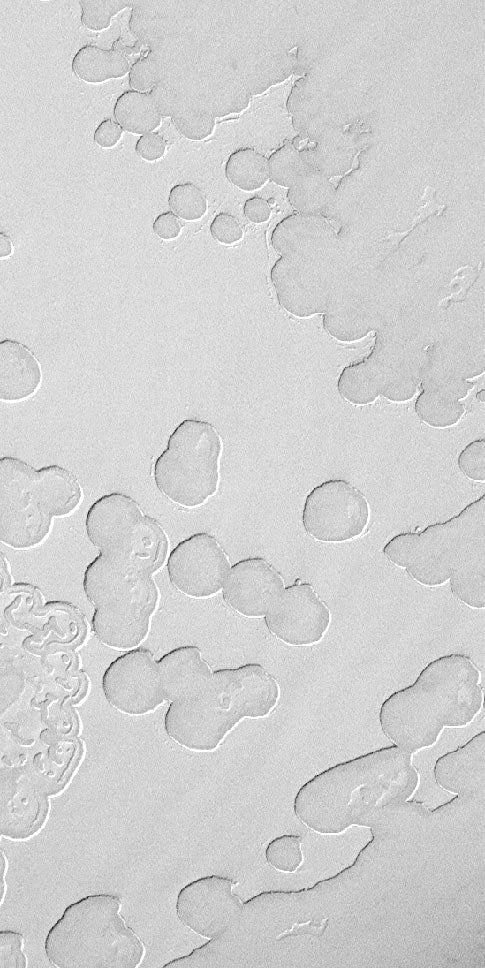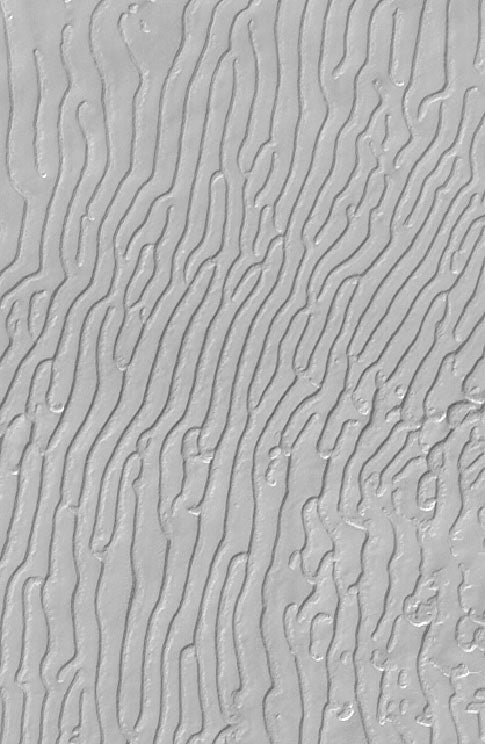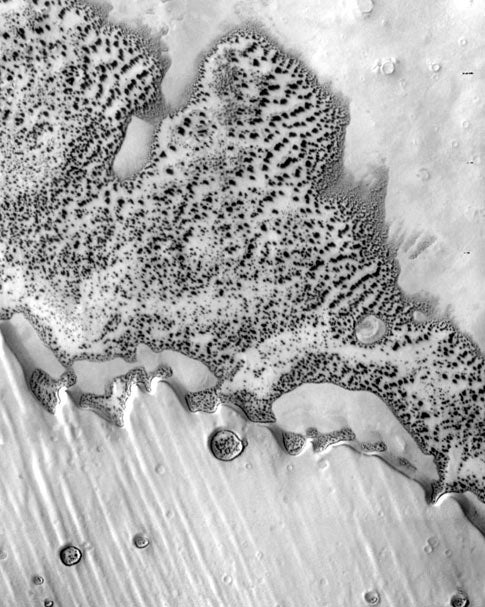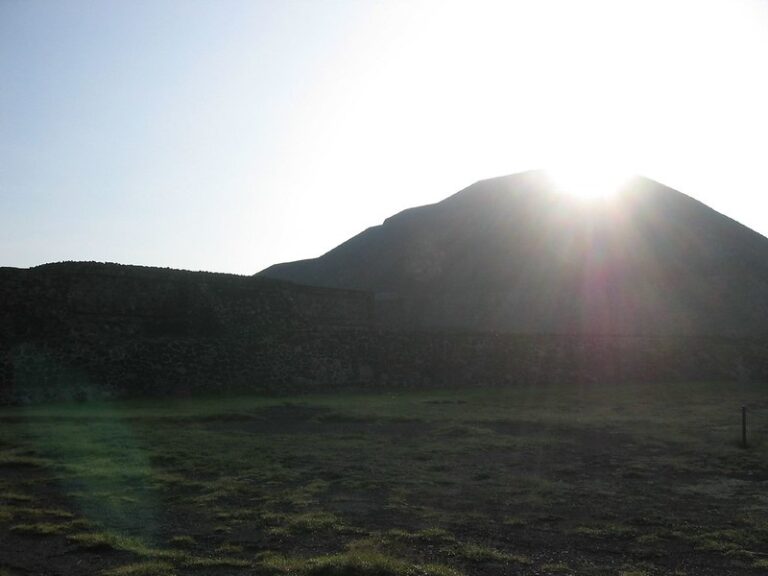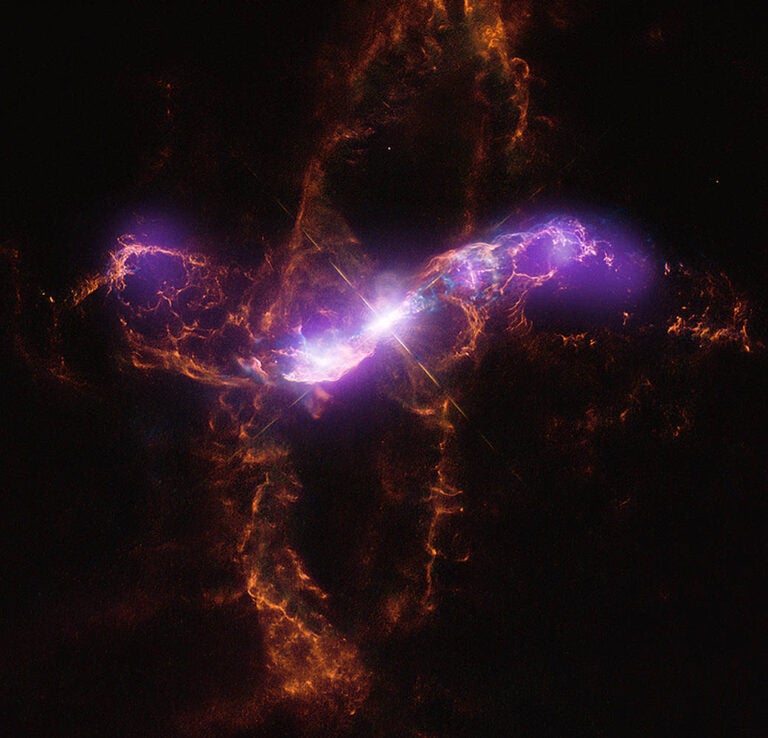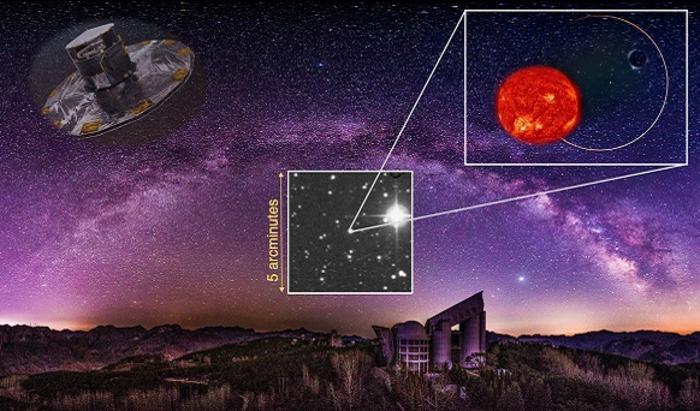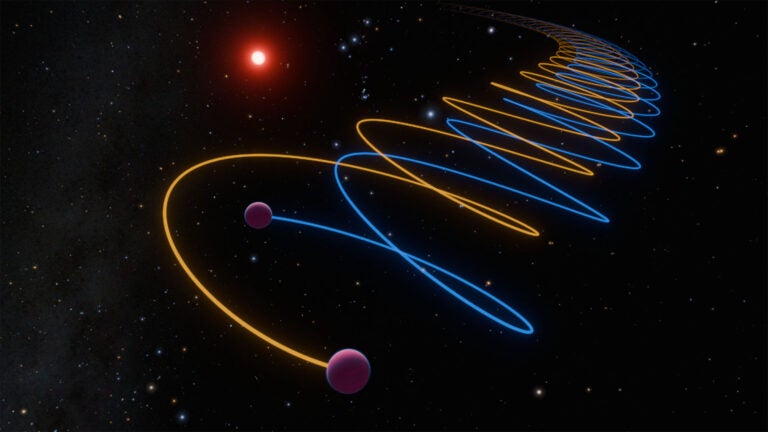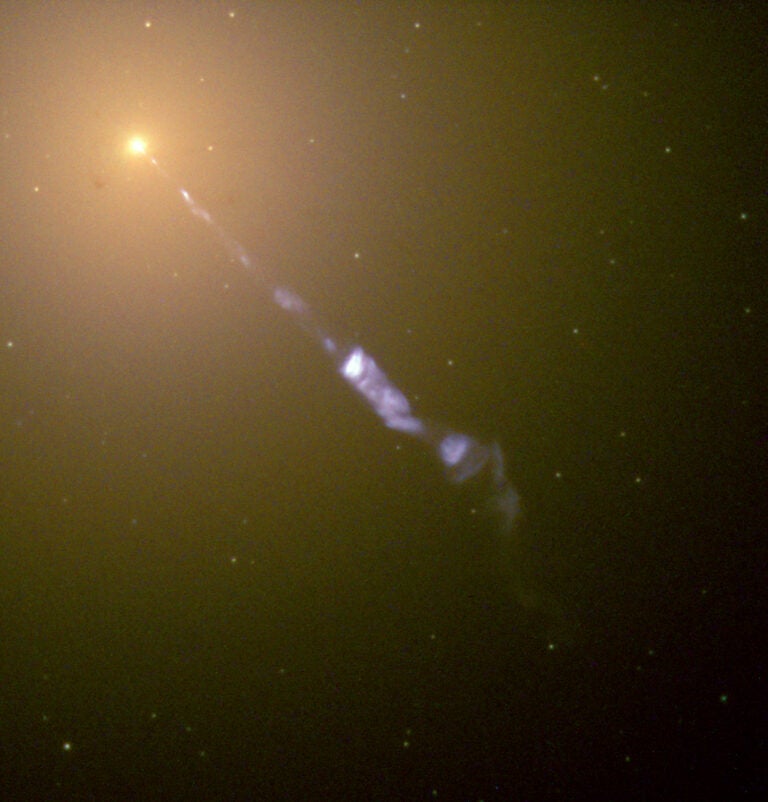Scientists suspect that the unique climatic conditions at the Red Planet’s south pole play a role in the variety of strange features the Mars Global Surveyor and Mars Odyssey spacecraft have seen there. Hugh Kieffer, emeritus scientist at the U.S. Geological Survey in Flagstaff, Arizona, has called the region a “zoo” of unusual terrain. Here are a few images of this cryological menagerie.
Swiss cheese
Parts of the residual, or permanent, south polar cap show a pattern reminiscent of sliced Swiss cheese. This is a Mars Global Surveyor (MGS) Mars Orbiter Camera (MOC) image taken August 2, 1999, at the very start of southern spring. Two layers are evident on the frost-covered surface — a brighter upper layer into which are set Swiss cheese-like holes, and a darker layer underlying the Swiss-cheese pattern.
Parts of the residual, or permanent, south polar cap show a pattern reminiscent of sliced Swiss cheese. This is a Mars Global Surveyor (MGS) Mars Orbiter Camera (MOC) image taken August 2, 1999, at the very start of southern spring. Two layers are evident on the frost-covered surface — a brighter upper layer into which are set Swiss cheese-like holes, and a darker layer underlying the Swiss-cheese pattern.
Nothing like this exists anywhere on Mars except within the south polar ice cap. The image is about 1.9 miles (3 kilometers) across.
Icy fingerprints
Some portions of Mars’ south polar residual cap exhibit long curving troughs instead of circular pits. This “fingerprint terrain” seems to form in a layer of material different from that involved in creating Swiss cheese.
Some portions of Mars’ south polar residual cap exhibit long curving troughs instead of circular pits. This “fingerprint terrain” seems to form in a layer of material different from that involved in creating Swiss cheese.
This MGS MOC image, acquired August 4, 1999, in the early austral spring shows a series of long, narrow depressions. Scientists think they formed through collapse and subsequent widening as ice sublimated.
Fingerprint terrain is found only in the Red Planet’s south polar region. This image is about 1.9 miles (3 km) wide.
This Mars Odyssey THEMIS image shows the curious south-polar markings scientists have nicknamed Dalmatian spots. The spots are dark sands at the base of depressions where the ice has defrosted to reveal underlying material. Some scientists think martian spiders may morph into these spots. This image, released in July 2003, is about 13 miles (21 km) wide.
Layers and spots
Mars Odyssey’s THEMIS instrument took this 5.5-mile-wide (9.9 km) image June 25, 2003, at the start of the southern spring season. This false-color image highlights layers in the ice cap. The dark spots fringing the cap appear only when the Sun first lights the ice.
Mars Odyssey’s THEMIS instrument took this 5.5-mile-wide (9.9 km) image June 25, 2003, at the start of the southern spring season. This false-color image highlights layers in the ice cap. The dark spots fringing the cap appear only when the Sun first lights the ice.


